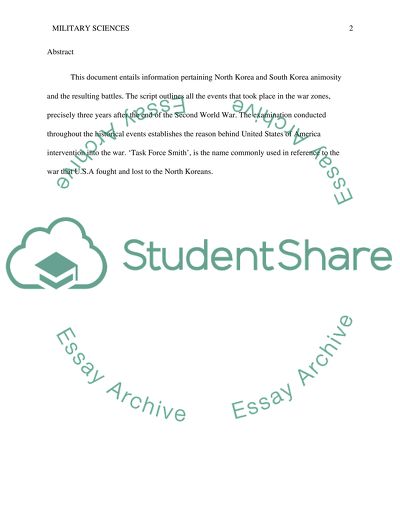Cite this document
(“Task Force Smith (Korean War) Research Paper Example | Topics and Well Written Essays - 2500 words”, n.d.)
Retrieved from https://studentshare.org/military/1401909-task-force-smith-korean-war
Retrieved from https://studentshare.org/military/1401909-task-force-smith-korean-war
(Task Force Smith (Korean War) Research Paper Example | Topics and Well Written Essays - 2500 Words)
https://studentshare.org/military/1401909-task-force-smith-korean-war.
https://studentshare.org/military/1401909-task-force-smith-korean-war.
“Task Force Smith (Korean War) Research Paper Example | Topics and Well Written Essays - 2500 Words”, n.d. https://studentshare.org/military/1401909-task-force-smith-korean-war.


